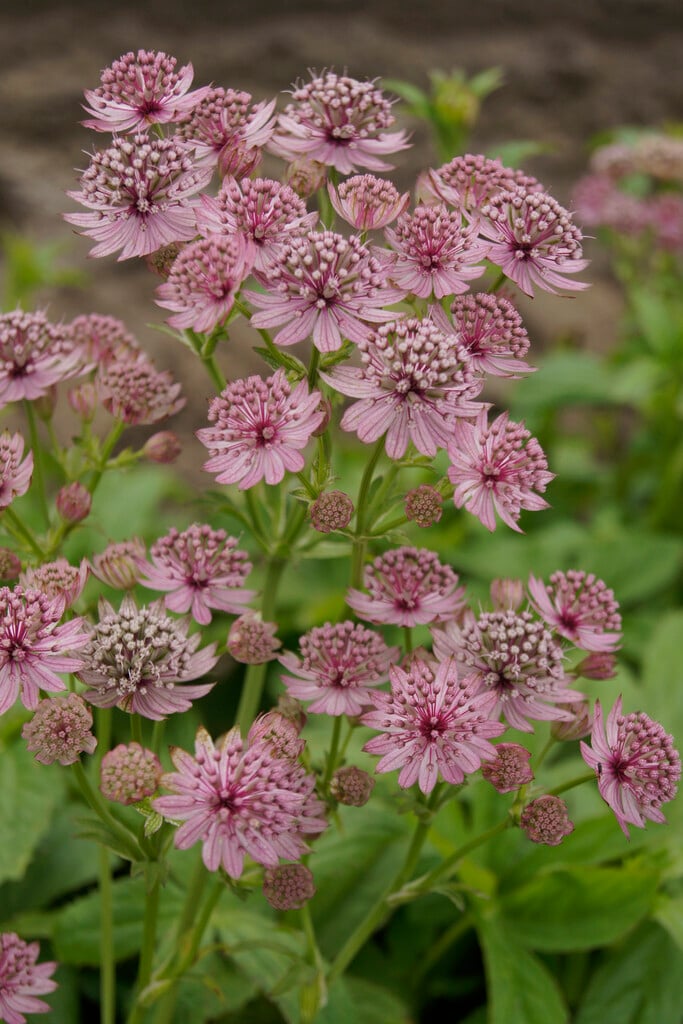Astrantia major 'Pink Pride'
masterwort 'Pink Pride'
A clump-forming, deciduous perennial to around 60cm tall with lobed and coarsely-toothed leaves. Erect, branching stems bear tiny pink, pincushion-like flowers surrounded by star-shaped bracts from summer into autumn

Buy this plant
Size
Ultimate height
0.5–1 metresTime to ultimate height
2–5 yearsUltimate spread
0.1–0.5 metresGrowing conditions
Moisture
Moist but well–drainedpH
Alkaline, Acid, NeutralColour & scent
| Stem | Flower | Foliage | Fruit | |
| Spring | Green | |||
|---|---|---|---|---|
| Summer | Pink | Green | ||
| Autumn | Pink | Green | ||
| Winter |
Position
- Full sun
- Partial shade
Aspect
East–facing or South–facing or West–facing
Exposure
Exposed or Sheltered Hardiness
H7Botanical details
- Family
- Apiaceae
- Native to GB / Ireland
- No
- Foliage
- Deciduous
- Habit
- Clump forming
- Genus
Astrantia are clump-forming herbaceous perennials with palmately lobed basal leaves and branched, erect, wiry stems bearing compact umbels of tiny flowers surrounded by a rosette of showy bracts
- Name status
Accepted
How to grow
Cultivation
Best grown in moist, fertile, preferably humus-rich soil in sun or part shade; drier conditions tolerated
Propagation
Propagate by division in spring
Suggested planting locations and garden types
- City and courtyard gardens
- Cottage and informal garden
- Wildlife gardens
- Cut flowers
- Flower borders and beds
Pruning
No pruning required, but deadhead to encourage repeat flowering and, if seedlings are not wanted, deadhead before seed is ripe
Pests
May be susceptible to aphids, slugs and astrantia leaf miner
Diseases
May be susceptible to powdery mildews
Get involved
The Royal Horticultural Society is the UK’s leading gardening charity. We aim to enrich everyone’s life through plants, and make the UK a greener and more beautiful place.